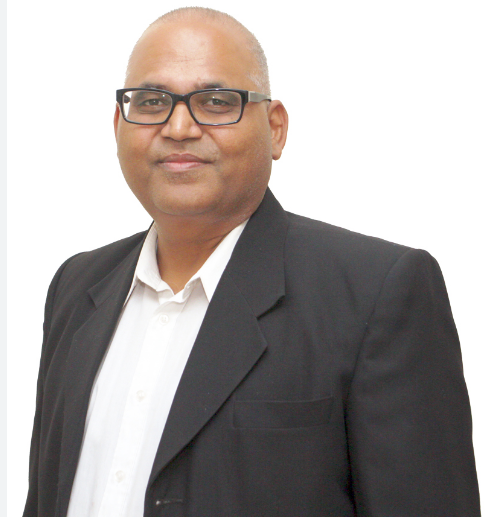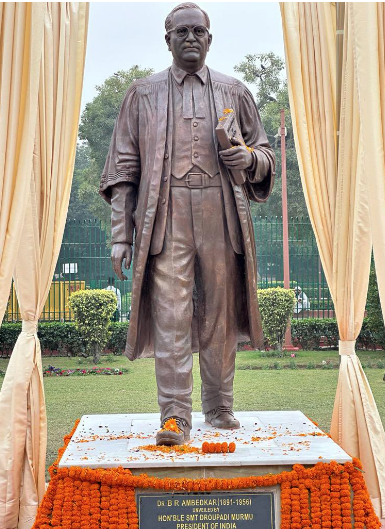
By Jai Birdi, Executive Director
Chetna Association of Canada
November 28, 2023
Congratulations on the Constitution Day of India.
(Asian Independent)- The Drafting Committee under the Chairmanship of Dr. Bhim Rao Ambedkar took 2 years, 11 months, and 12 days to draft the Indian Constitution. In addition to the Drafting Committee, there were other Committees and Sub-Committees also who laboured hard to give India this largest written document. However, the work done by the Drafting Committee’s was the hardest. Dr. Rajendra Prasad, President of the Constituent Assembly, on the final adoption of the Constitution said, “I have realised as nobody else could have, with what zeal and devotion the members of the Drafting Committee, and especially its Chairman, Dr. Ambedkar in spite of his indifferent health, have worked.” Undoubtedly, Dr. Ambedkar is the “Father of the Indian Constitution.” The Constitution was adopted on November 26, 1949. It came into force on January 26, 1950. At the initiative of Prime Minister Narendra Modi, the Government of India, in 2015, declared November 26 as the “Constitution Day”. Prior to that the day used to be known as the “Law Day.”
The Consulate General of India, Vancouver, in association with Shri Guru Ravidass Sabha, and Chetna Association of Canada, Vancouver celebrated the Day at Consulate’s premises on November 27th. In addition to H.E. Manish, the Consul General, the other prominent speakers were Dr. Shinder Purewal, Professor of Political Science, Kwantlen Polytechnic University, Surrey, Lawyer Lovleen Gill and Jai Birdi, Executive Director, Chetna Association. As the Day coincided with Guru Nanak’s birthday, Giani Harminder Singh of Khalsa Diwan Society, Vancouver spoke about Guru Nanak’s philosophy.
While drafting the Constitution, due care was taken of nation’s diversity, i.e. religion, language, and the educationally and economically disadvantaged population known as the Scheduled Castes and Scheduled Tribes, who were lately declared to be called “The Dalits” – The Downtrodden. After about a three- quarter of a century of the implementation of the Constitution it becomes necessary to retrospect on the economic emancipation of this special section of Indian society.
Even before the Constitution came into force, Dr. Ambedkar’s monumental writing, “Buddha or Karl Marx” and the Resolution of Karachi Congress, 1931 served as a great guide for economic emancipation of the masses. In other words, “In order to end the exploitation of the masses, political freedom must include real economic freedom for the starving millions.”
The Preamble of the Constitution gives a guarantee to secure Justice: social, economic, and political, and Equality of status and of opportunity. The Directive Principles of State Policy guide the government as follows:
“The State shall direct its policy in such a manner as to secure the right of all men and women to an adequate means of livelihood, equal pay for equal work and within limit of its economic capacity and development, to make effective provision for securing the right to work, education and to public assistance in the event of unemployment, old age, sickness and disablement or other cases of undeserved want. The State shall also endeavour to secure to workers a living wage, humane conditions of work, a decent standard of life, and full involvement of workers in management of industries.”
During these 73 years of the implementation of the Constitution, the underprivileged sections of Indian society have come a long way to combat economic hardship by provisions of reservation in employment, in educational institutions and in elected bodies, i.e., the Panchayats, State Assemblies and the Parliament. However, this is just a tip of an iceberg. A small percentage of people have been benefited by the welfare measures of the government. Still, we have to wipe out the tears of the man standing last in the que. In the far-flung tribal areas people go empty stomach.
A Case in Reference to Dalit Economic Emancipation-
The Dalit Indian Chamber of Commerce and Industries (DICCI) is one of the examples. The founder of DICCI, Dr. Milind Kamble states that whatever success the Chamber has gained, is because of the government and the constitutional framework. It would not have been possible without government’s pro-Dalit policies. He, however, is hopeful to achieve Dr. Ambedkar’s vision of economic empowerment through self-help and entrepreneurship. Founded in 2005, the Chamber continues to face problems and challenges. These are some highlights of DICCI: –
- It provides a platform and network for Dalit entrepreneurs to dream and act as a core group for shifting mindsets and creating opportunities.
- Has signed a Memorandum of Understanding with Chambers of Commerce outside of India. In March this year, DICCI signed a Memorandum of Understanding with the National Black Chamber of Commerce, United States.
- Has started signing Memoranda of Understanding with the Central Bank of India, Dr. Ambedkar International Centre and the Ministry of Social Justice and Empowerment.
- Has created a Venture Capital Fund.
Finally, to quote Dr. Ambedkar – “However good a Constitution may be, if those who are implementing it are not good, it will prove to be bad. However bad a Constitution may be, if those who are implementing it are good, it will prove to be good.”








